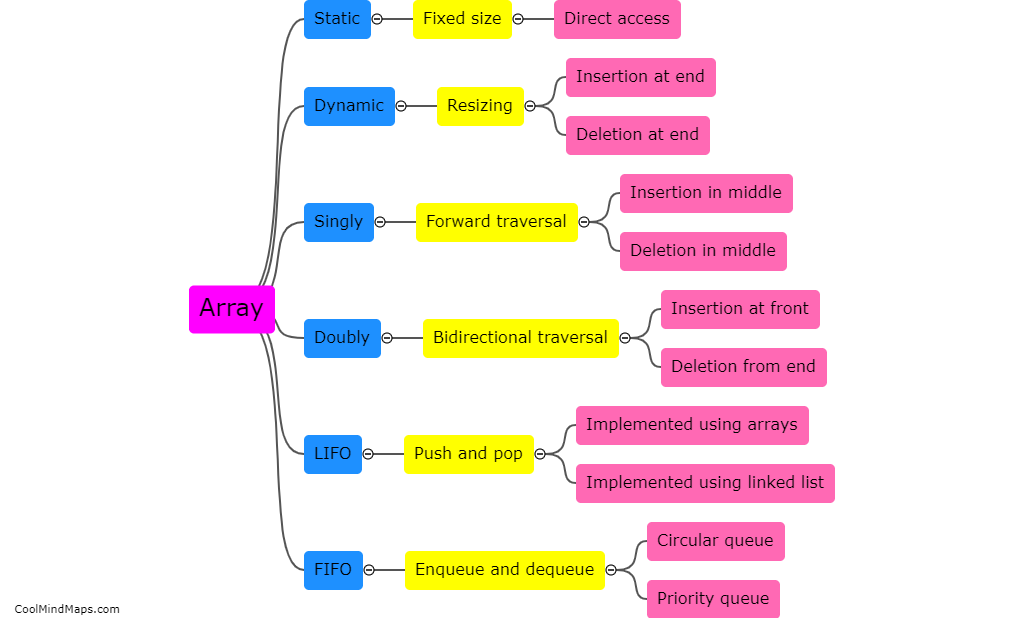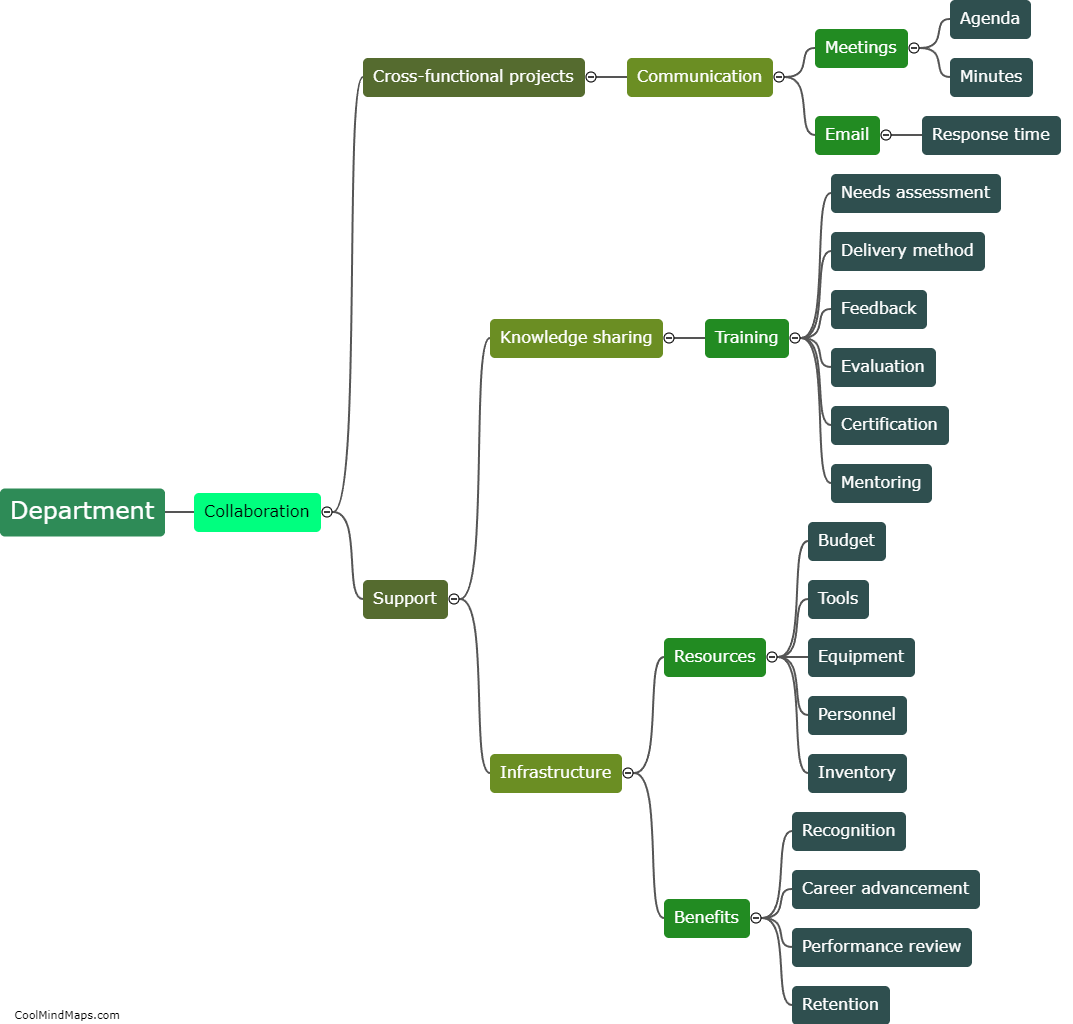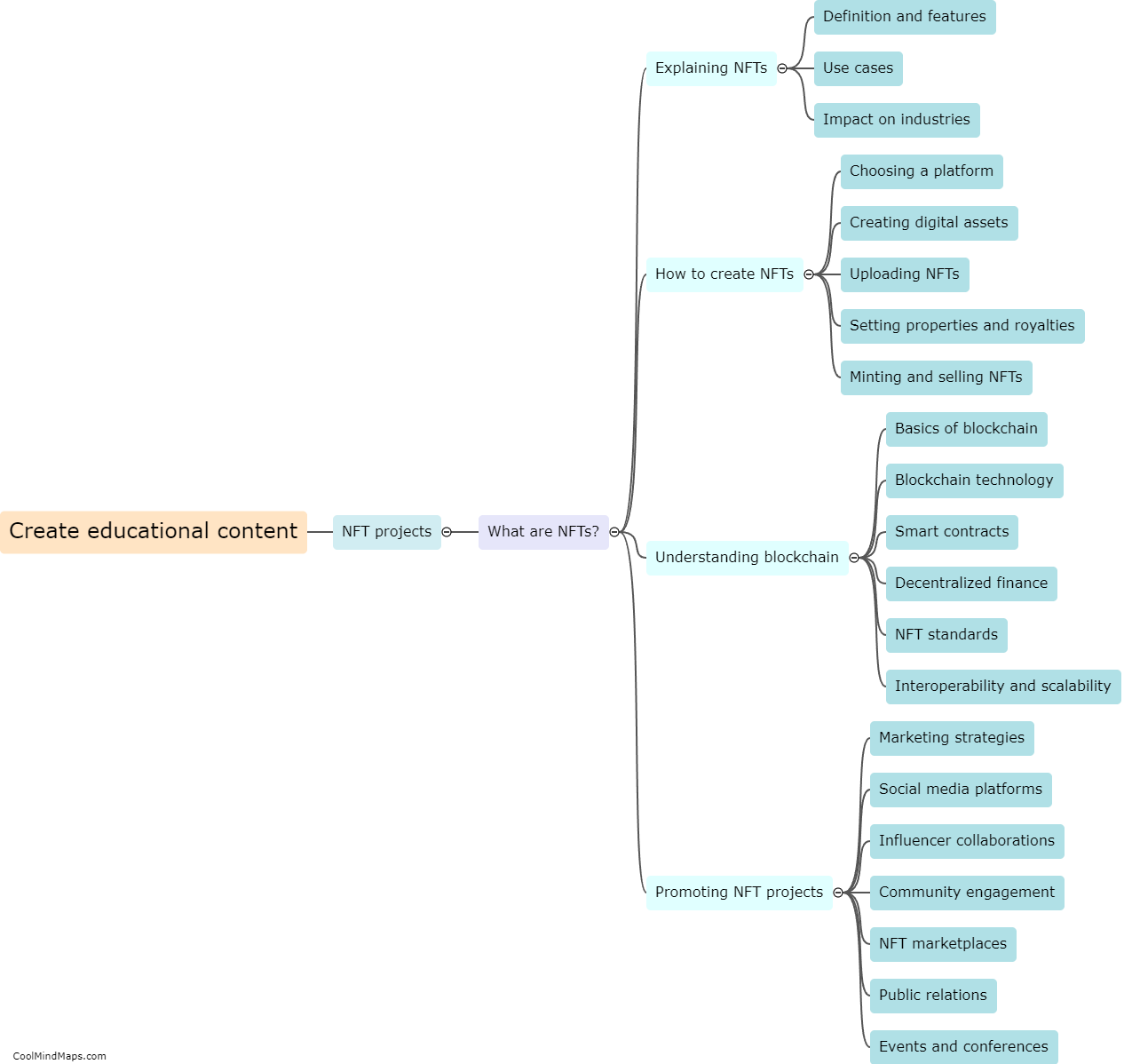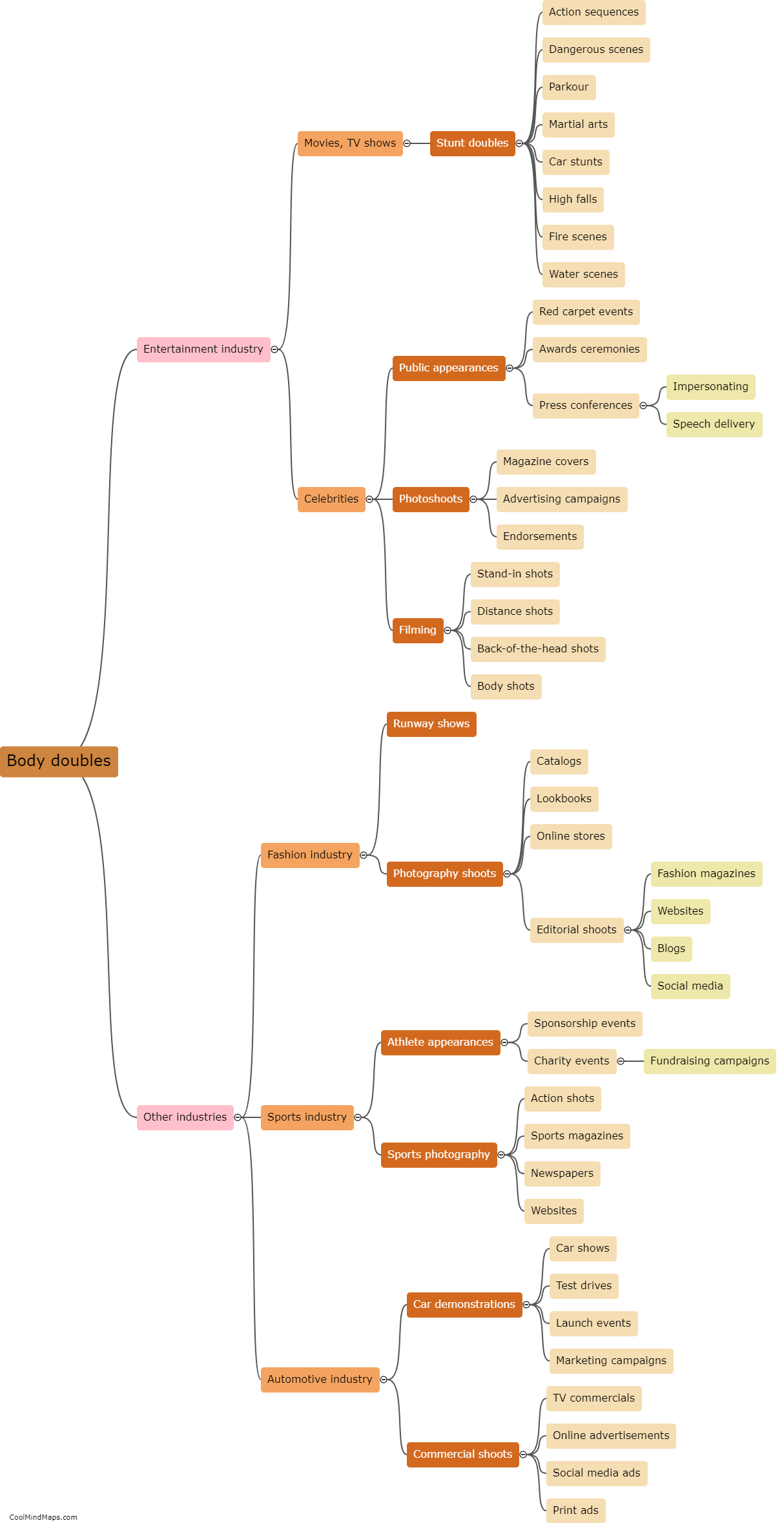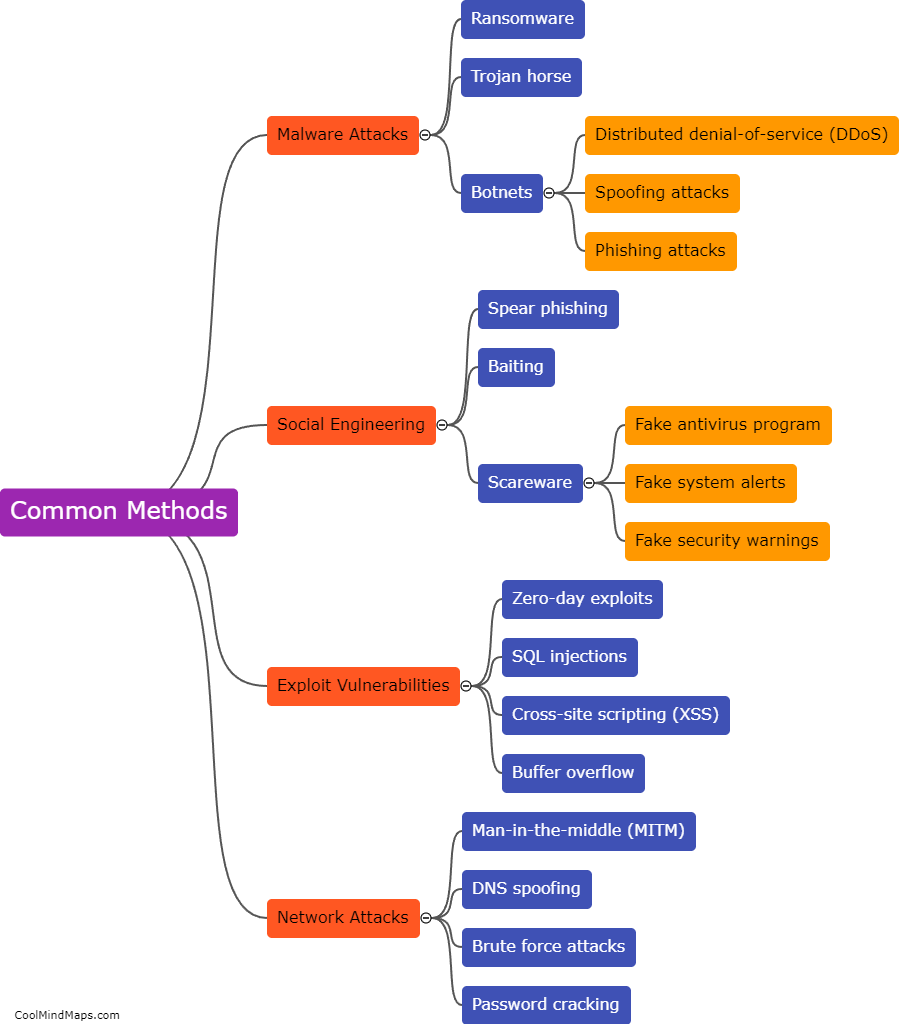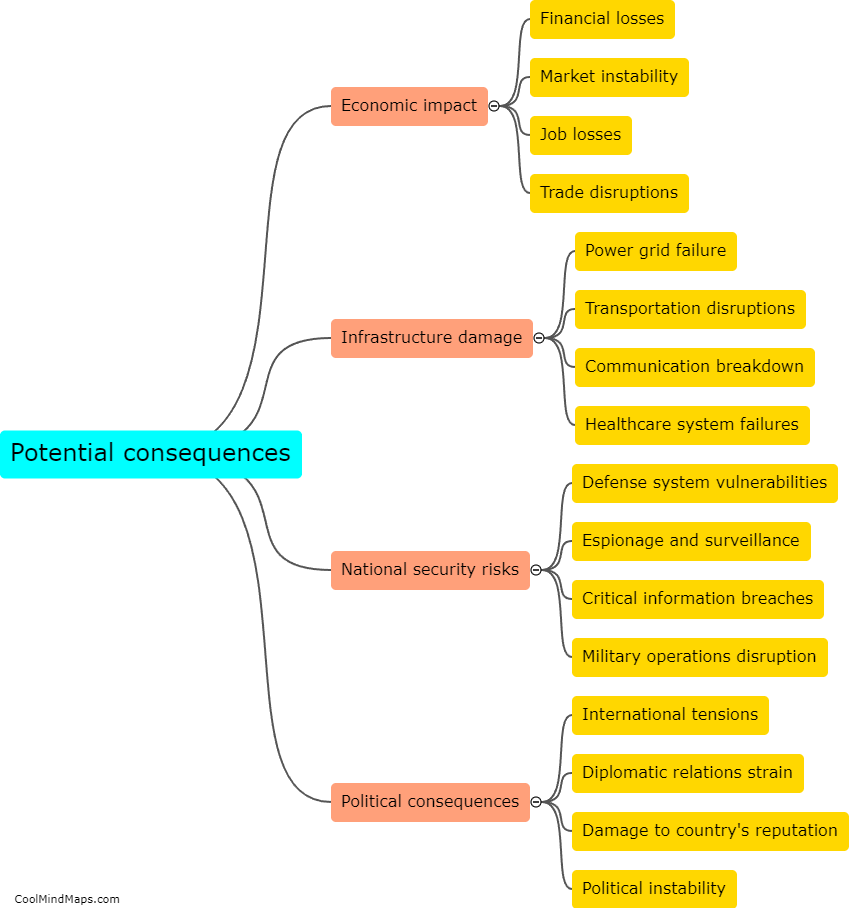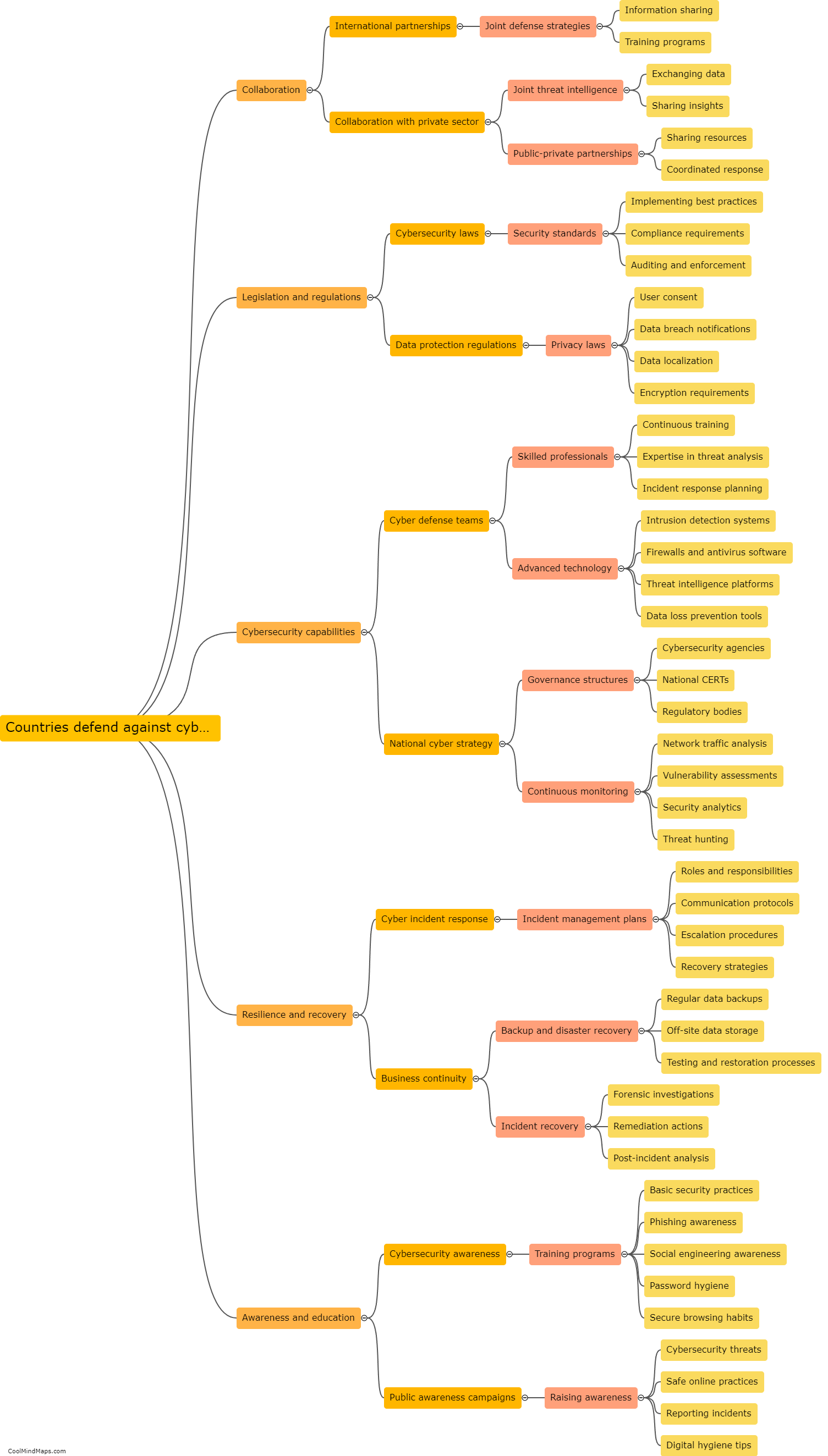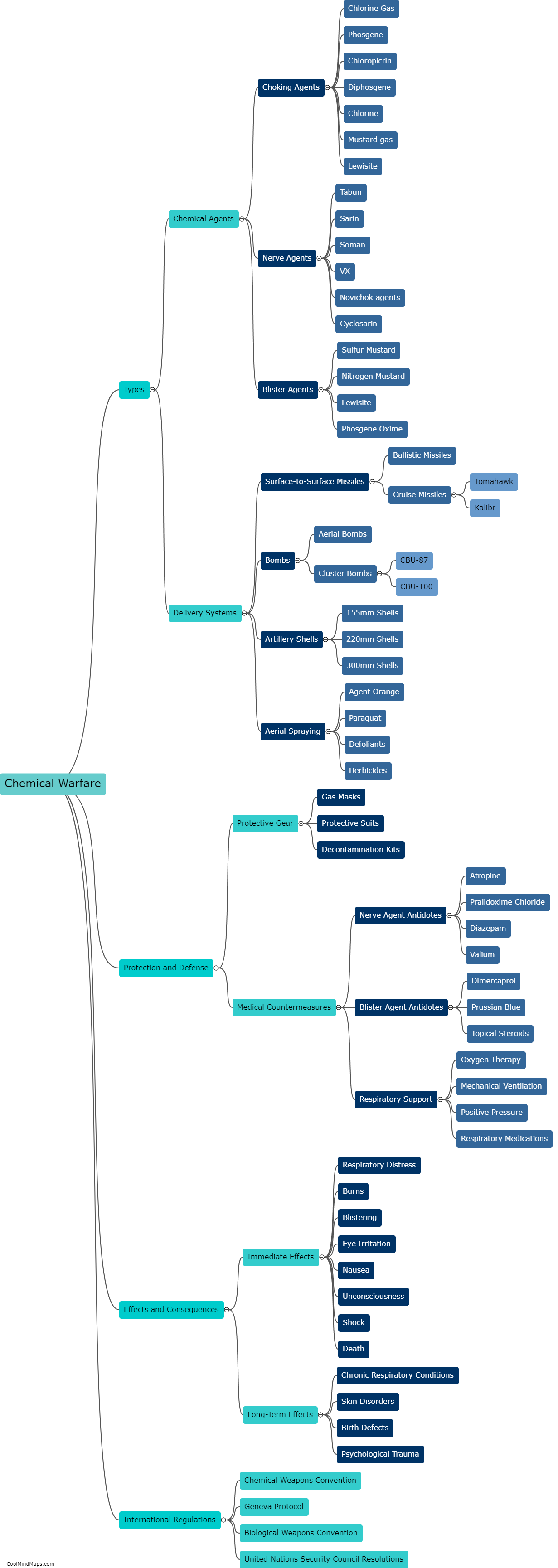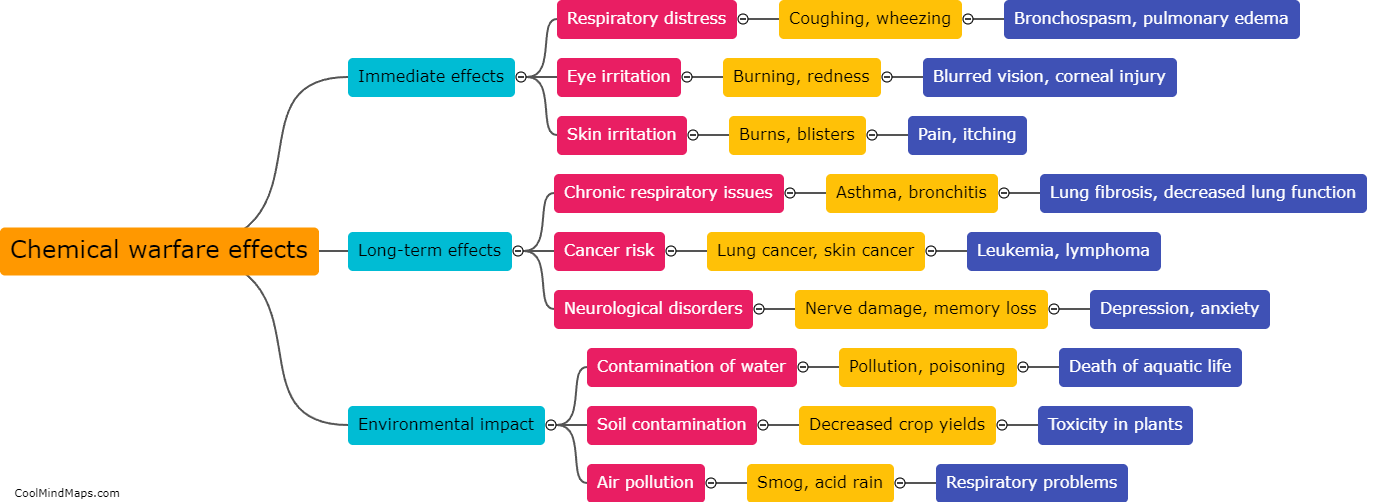What are the different types of chemical agents used in chemical warfare?
Chemical warfare involves the use of chemical agents to cause harm or death to humans, animals, or plants. There are various types of chemical agents that can be employed in warfare. Nerve agents, such as sarin and VX, disrupt the normal functioning of the nervous system, leading to paralysis and suffocation. Blister agents, like mustard gas and lewisite, cause severe skin burns and respiratory damage. Blood agents, such as hydrogen cyanide, interfere with the body's ability to transport oxygen, resulting in asphyxiation. Choking agents, like chlorine gas, irritate the respiratory system, causing inflammation and potentially lethal damage. Lastly, choking and vomiting agents, such as phosgene and adamsite, induce respiratory distress and can lead to drowning in one's own bodily fluids. The use of chemical agents in warfare is banned under the Chemical Weapons Convention due to their indiscriminate and devastating effects on civilians.
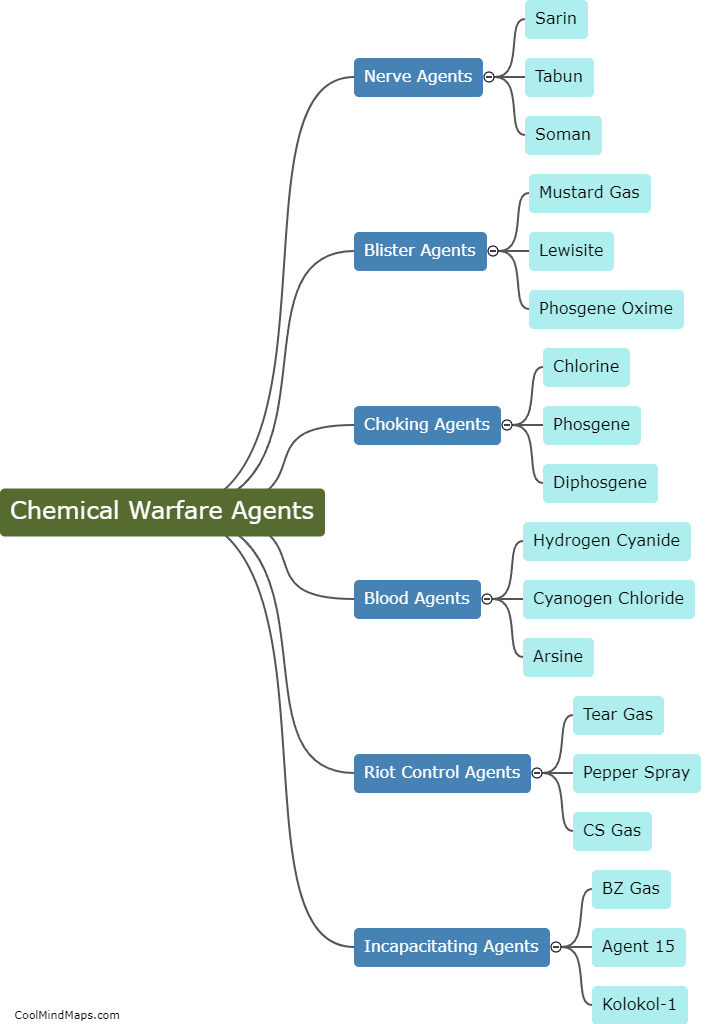
This mind map was published on 19 December 2023 and has been viewed 82 times.
